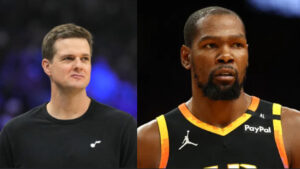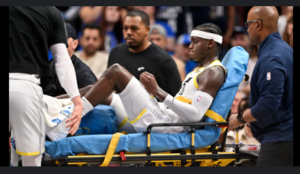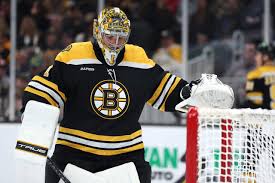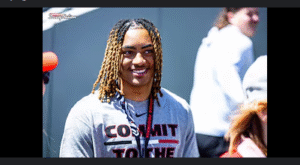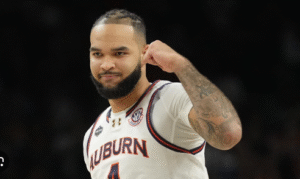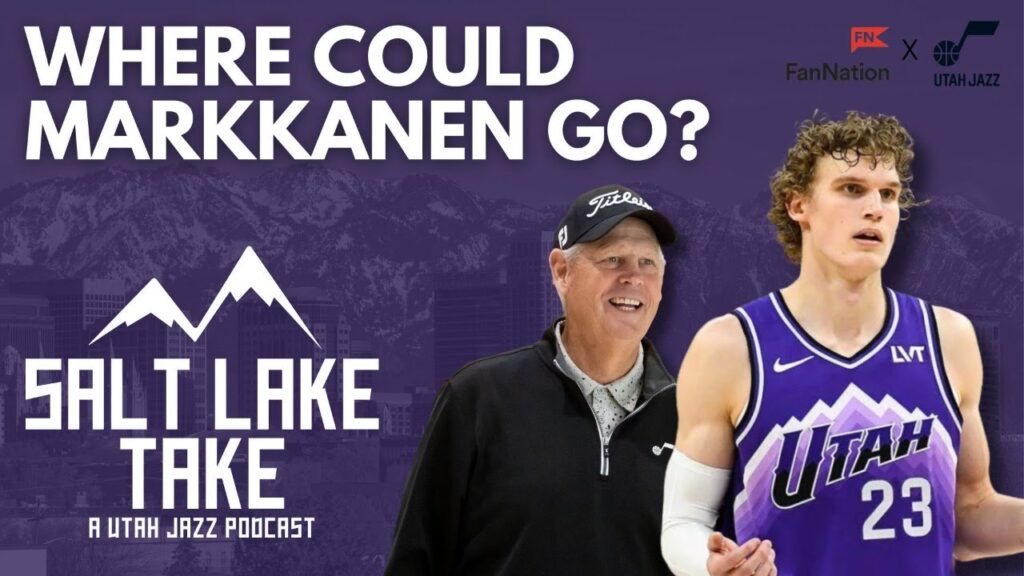
Lauri Markkenen’s future is one of the greatest dominoes that still has to fall in the NBA summer.
The summer has been filled with whispers about trading the Jazz forward, and now things are about to take a turn for the better. The window of opportunity for Markkanen to work out an extension with the Jazz opens on August 6, so that date looms large as a potential deadline.
The Jazz are still considering the Warriors’ offer, it was disclosed on Monday, provided that it includes second-year player Brandin Podziemski. Regarding the talks between the two teams, NBA insider Marc Stein stated the following:
“Some parts of the league believe that Utah’s interest in Brandon Podziemski of Golden State, along with potential compensation for future draft picks that the Warriors could include with the All-Rookie first team selection, is significant enough to sustain the possibility of a Markkanen trade between now and August 6. That is the first day that Markkanen is able to renegotiate and extend his deal with the Jazz at a substantially larger amount than his $18 million expiration salary for 2024–2025, as you have undoubtedly already heard.”
In addition, Stein gave additional details about the players Golden State is prepared to give up in return for Markkanen:
“However, there is also a growing consensus across the league that the Warriors would be more inclined to trade Jonathan Kuminga rather than Podziemski in exchange for Markkanen or any other big-swing deal. It is important to highlight, though, that Golden State’s offers for Markkanen up to this point have been around a deal that excludes Podziemski and Kuminga and includes draft compensation and Moses Moody.”
Regarding Golden State’s rivalry for Markkanen, Tim Montemayor of the Salt Lake City podcast The Monty Show revealed the following yesterday:
“The San Antonio Spurs are prepared to provide a third first-round selection, and it’s evident that they realize they must act quickly to complete this transaction. Based on my information from yesterday, I am confident that the Golden State Warriors are in a strong position to pull off this move. There is no pressing need to close that agreement right now. The Jazz intend to prolong this dispute for as long as possible.”
In the event that Golden State chooses to increase their offer, I believe the Hawks would gain from a Markkanen signing. Danny Ainge, president of basketball operations for the Jazz, is unlikely to accept a package that excludes either. Shooting guard Collin Sexton of the Jazz averaged 18.7 points, a career-high five assists, three rebounds, and 39% from three-point range while shooting 60% true. For a Jazz club that lacks many defensive stoppers, he has developed into a valuable defensive player. He can hold up on defense and benefit from Trae Young’s bulk, so on paper, he would slot right in next to him. The Hawks are presently taking a chance on Dyson Daniels, who they acquired from the Pelicans, but he might be that player if his shooting improves.
A three-team deal might make sense for all parties given the Hawks’ need for a shooting guard, the Warriors’ interest in Markkanen, and the Jazz’s desire to maximize Markkanen’s worth. How can a possible deal be structured?
Please take note that this is not what I believe the Hawks should or will do; rather, it is merely a lighthearted and hypothetical exercise to see what kind of movements can be made. And that’s it.
This is how the deal is made:
Hawks receive: Kevon Looney, Collin Sexton, Gary Payton II, 2026 first round selection (via Atlanta, via GSW), 2031 second round pick (via GSW), and 2025 first round pick (top-15 protected, via Minnesota)
Warriors receive Walker Kessler, Lauri Markkanen, and Kobe Bufkin.
Jazz receives: Brandin Podziemski, Jonathan Kuminga, Larry Nance Jr., DeAndre Hunter, first-round selections in 2025, 2026, and 2027 (via GSW), first-round selections in 2027 (protected in the top ten, via GSW), first-round selection in 2027 (least favorable of Milwaukee/New Orleans, via Atlanta), and second-round selection in 2025 (via Minnesota, via Atlanta)
The Hawks made this trade because it instantly strengthens Atlanta’s starting lineup with Young, Sexton, Risacher, Johnson, Okongwu, and Capela. Sexton is an aggressive finisher who can spread the floor and gives Young the defensive help he needs. With Bogdan Bogdanovic in his extremely productive sixth man role, the Hawks would be able to maintain the flexibility to run a Sexton-Daniels backcourt when circumstances demand more defense. Due to his reduction in thefts, defensive win shares, and defensive box plus-minus, Gary Payton II’s defense suffered significantly.
He was limited by injuries the previous season, though, so it’s feasible that he might regain his position as an athletic play finisher and elite defender, as he did during the Warriors’ championship run. Being likely the third-string center, Kevon Looney is a redundancy on this team, but he might be useful to contenders looking for a big man on trade deadline day. Even if he stays on the roster, Atlanta might still gain from him because he’s a fantastic rebounder and locker room presence. A first-round pick from Utah is also returned to Atlanta in what might be a stacked 2025 NBA Draft.
The Hawks selected Jalen Johnson with the 20th overall pick in 2021, even though the selection is probably going to be in the 20s. The late first round is not without merit. Finally, the Hawks lost about $20 million in cap space as a result of this decision.
The Hawks’ reasons for declining this deal: Given that they selected Bufkin in the 2023 NBA Draft just a year prior, it would be difficult to move on from him in this trade. The Hawks would like to hang onto a 6’5 guard with his two-way ability. It would be disappointing if Payton II were to fail to recover from his injuries, and Looney’s redundancy would make it difficult to make the most of every dollar of cap space. Even with his off-the-court intangibles, Atlanta has almost little chance of benefiting financially from his $8 million contract.
Reasons the Warriors would agree to this: Even in a deep Western Conference, a group consisting of Curry, Buddy Hield, Draymond Green, Markkanen, Trayce Jackson, Davis, and Walker Kessler should be sufficient to make a strong push for a postseason berth. Seven-foot-tall forward Markkanen would be the backup scorer for the Warriors. He shot 63% true from the field in his season-ending average of 23.2 points and 8.2 rebounds, 40% from three on eight tries per game, and 41.4 percent on catch-and-shoot threes. He’s a fantastic match for the Warriors’ scheme, and it’s thrilling to consider the defensive potential of a Draymond, Lauri, and TJD team.
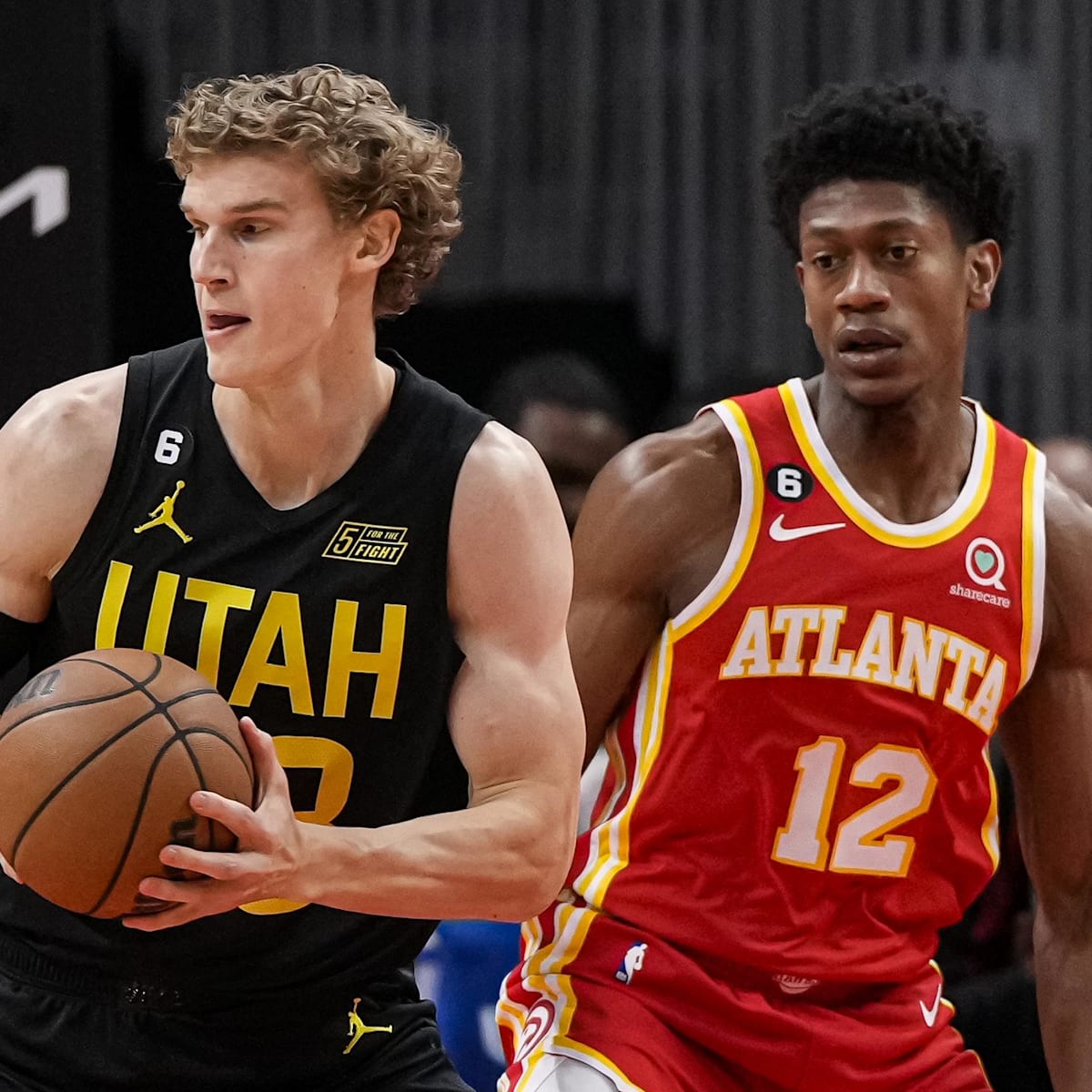
In addition, Golden State still has Moses Moody, who will score points off the bench as Andrew Wiggins’s season of recovery and DeAnthony Melton’s health become less significant variables. They could potentially line up Curry, Green, Wiggins, Markkanen, and TJD in a lineup to surround Curry with size. Kessler can start over TJD or go in as a good rim protector (he ranks #1 in rim points saved per possession for players under 25). Bufkin has the potential to be a fantastic Golden State backup guard if he can maintain his health. In his limited Atlanta minutes, he showed flashes of two-way potential; surrounding Steph with players like him is a reasonably safe bet.
Why the Warriors wouldn’t make this deal: It would be difficult to part with both Kuminga and Podziemski after initially being hesitant to do so. Additionally, they are essentially betting on a player who has never participated in the playoffs with their future for the next three years. This is probably what it would take to acquire Lauri, but the risk is obvious. High-risk moves must be taken into consideration if the Warriors are serious about not squandering the final few years of Curry’s outstanding play.
Reasons the Jazz would agree to this: Markkanen received a very nice return in the form of two young players with intriguing upside and four first-round picks. This would take Utah’s asset pool, which is already unmatched by the Thunder (who may have had three first-round picks in three straight drafts prior to this deal) and elevate it to absurd heights. They trade a better Warriors pick in the 2025 NBA Draft for a Minnesota pick that is probably going to be towards the end of the first round.
The deal’s underappreciated benefit, though, is that it guarantees Utah’s continued contention for the first overall choice while providing them with a genuine opportunity to assess their talent. They can compete in most games with their starting lineup of Keyonte George, Podziemski, Kuminga, Taylor Hendricks, John Collins, and Drew Eubanks. DeAndre Hunter also makes sense as a versatile 3&D forward. Though he has started games in the past, he had maybe the best stretch of his career last season when he came off the bench for Atlanta.
Utah has salary cap room to spare even though his contract of over $20 million would make him an expensive bench piece for other teams. If they require additional flexibility, they can always dump Jordan Clarkson’s money at the deadline. Getting Larry Nance Jr., who can play center and would be a positive locker room figure for a young club like Utah, also makes more sense after trading for Kessler.
The Jazz might not want to pay out $5 million in salaries, thus that is one reason why they would not agree to this contract. Reducing their salary to below the tax would be rather simple, either by trading John Collins or Clarkson. Hunter makes a lot of money, thus it would be challenging to move his contract if they were to locate a suitable replacement. In the end, the Jazz probably shouldn’t worry about those issues because it will probably be two years before they actually need to worry about their money.
